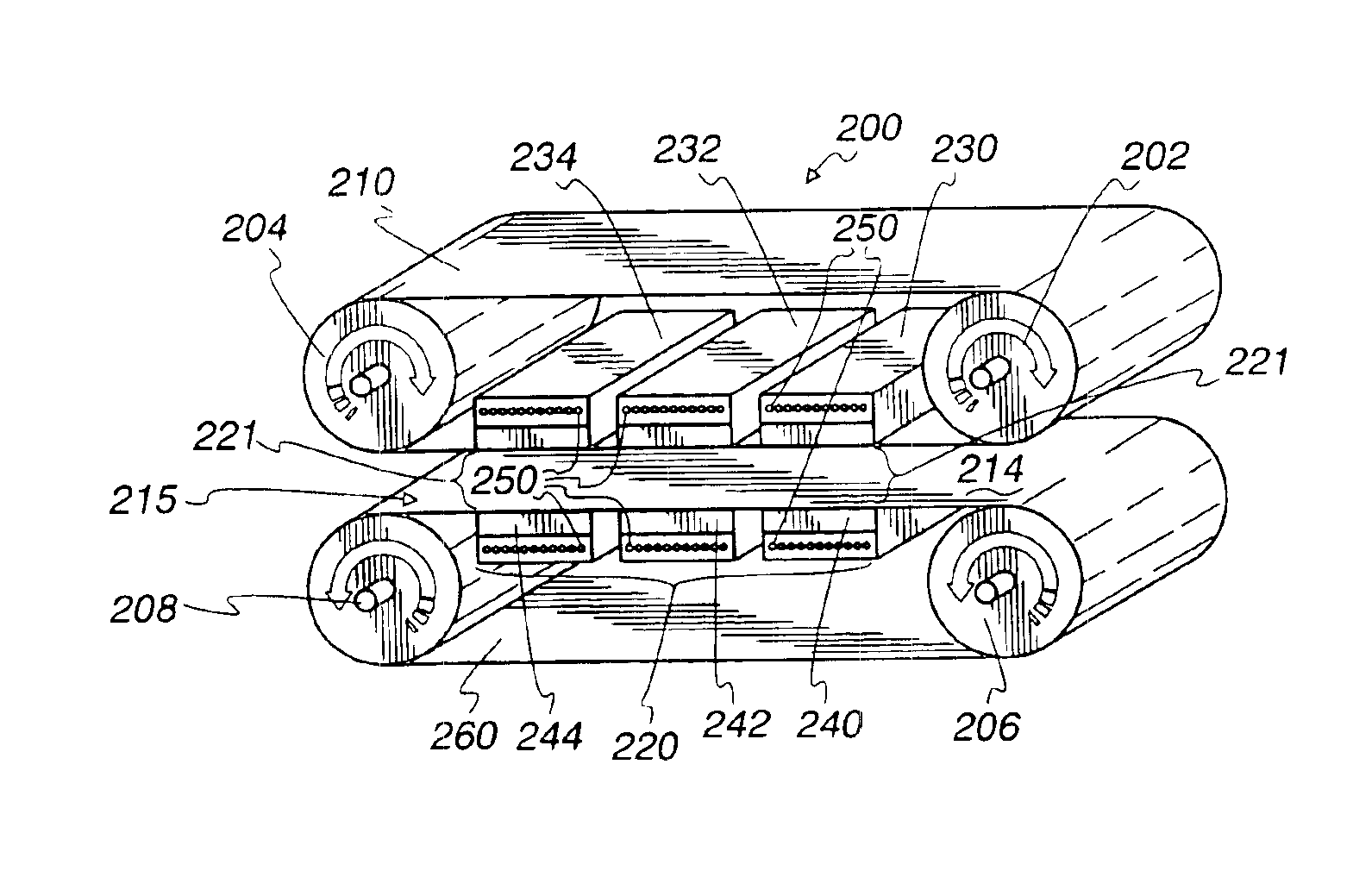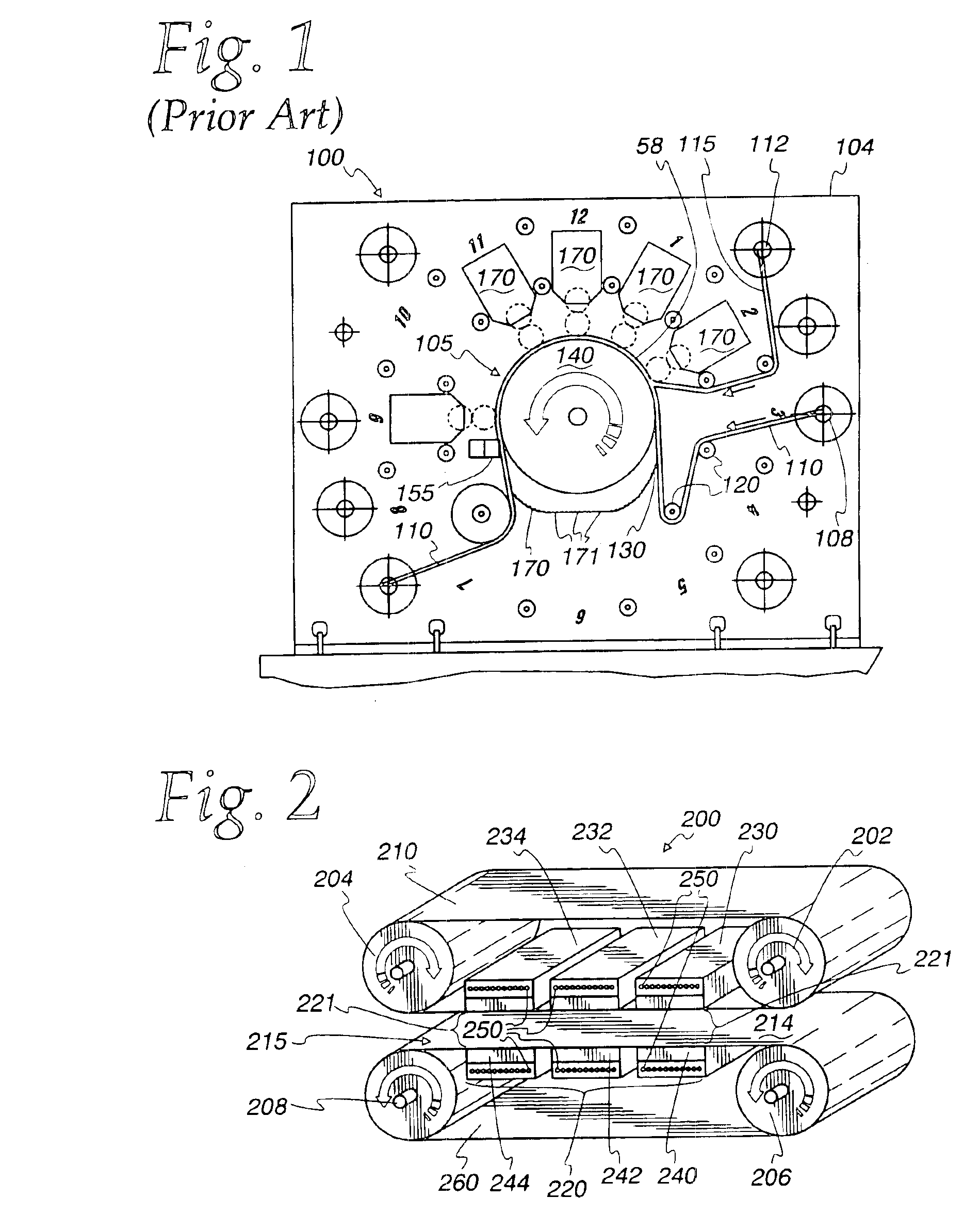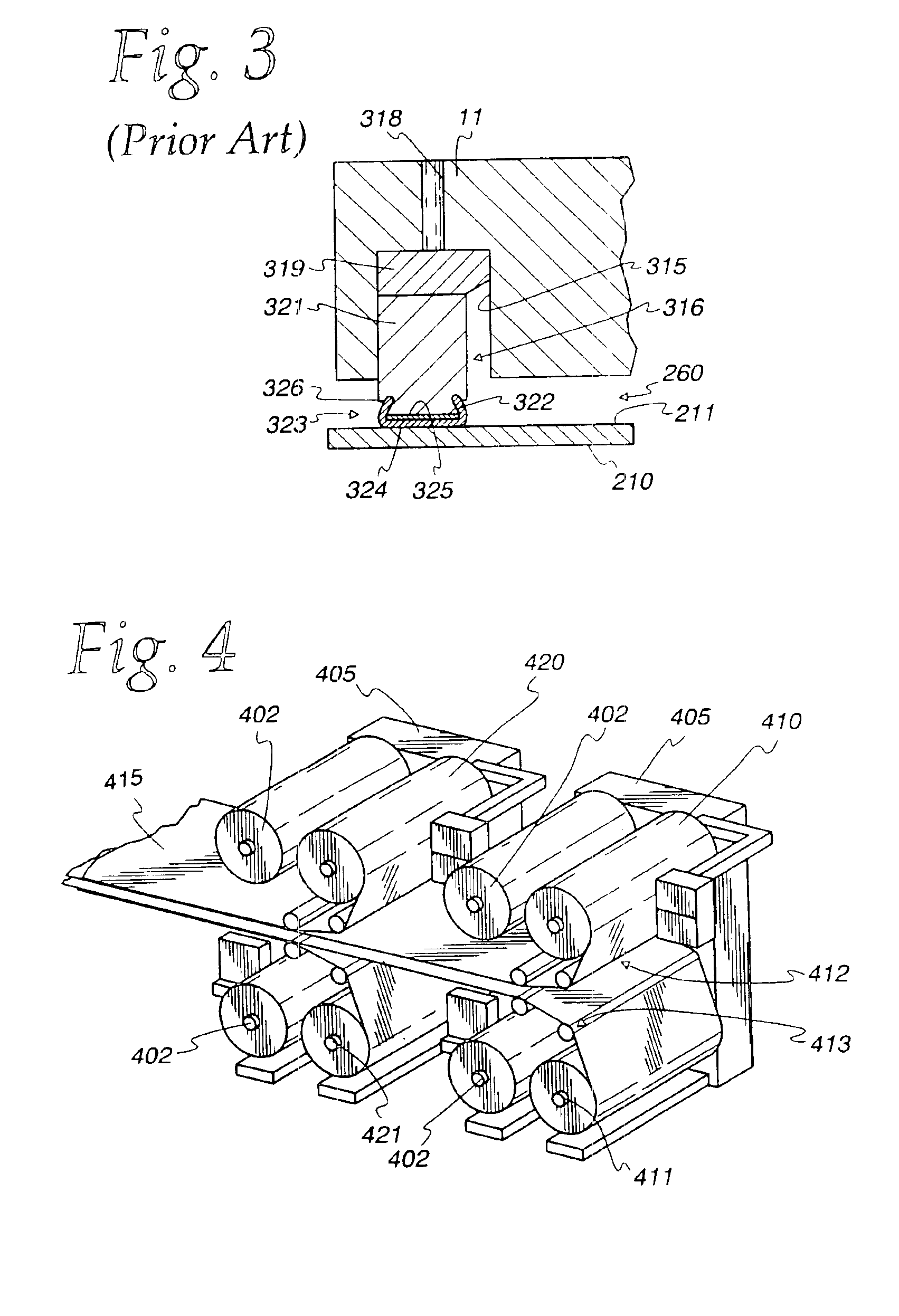Process and apparatus for embossing precise microstructures and embossing tool for making same
a microstructure and precise technology, applied in dough embossing machines, solid-state devices, butter manufacturing, etc., can solve the problems of limited processing speed (and thus material volume), formation of some embossed surfaces, and complex modification of the geometry of the tool surfa
- Summary
- Abstract
- Description
- Claims
- Application Information
AI Technical Summary
Benefits of technology
Problems solved by technology
Method used
Image
Examples
Embodiment Construction
[0063]Referring now to FIG. 1, a modified form of an existing embossing machine 100 for producing an embossed substrate or film 110 is shown in elevation, suitably mounted on a floor 102. This machine is similar in operation to those disclosed in aforementioned U.S. Pat. No. 4,486,363, but instead uses a single large roller and different pressure rollers. It is disclosed in greater detail in commonly assigned U.S. application Ser. No. 09 / 776,281, filed Feb. 2, 2001, entitled “Method of Making a Flexible Substrate Containing Self-Assembling Microstructures,” incorporated herein in full by reference. The machine 100 includes a frame 104, centrally mounted on which is an embossing means 105. A supply reel 108 of unembossed thermoplastic film 110 and a supply reel 112 of flexible plastic carrier film 115 are mounted on the frame 104. The film 110 may be 0.005 inches (125 μm) thick and the carrier film 115 may be about 0.002 inches (50 μm) thick. The film 110 and the carrier film 115 are...
PUM
| Property | Measurement | Unit |
|---|---|---|
| depth | aaaaa | aaaaa |
| pressure | aaaaa | aaaaa |
| pressure | aaaaa | aaaaa |
Abstract
Description
Claims
Application Information
 Login to View More
Login to View More - R&D
- Intellectual Property
- Life Sciences
- Materials
- Tech Scout
- Unparalleled Data Quality
- Higher Quality Content
- 60% Fewer Hallucinations
Browse by: Latest US Patents, China's latest patents, Technical Efficacy Thesaurus, Application Domain, Technology Topic, Popular Technical Reports.
© 2025 PatSnap. All rights reserved.Legal|Privacy policy|Modern Slavery Act Transparency Statement|Sitemap|About US| Contact US: help@patsnap.com



